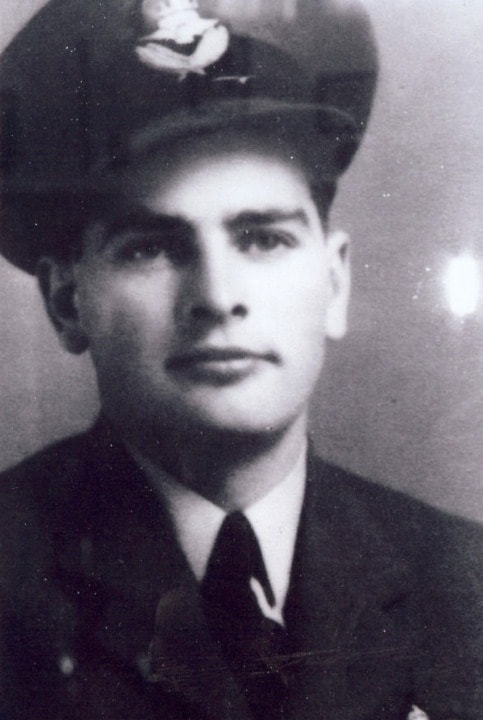A Sheep Creek miner played a key role in a 1944 mass escape from a German prisoner of war camp later immortalized in print and on film.
Flight Lt. Henry (Hank) Birkland was one of 76 British and Commonwealth airmen who tunnelled out of Stalag Luft III — only to be caught and executed.
Charles Bronson’s character Danny Velinski in the 1963 film The Great Escape was reportedly a composite based on several men including Birkland.
“They didn’t come much tougher,” Jonathan F. Vance wrote in A Gallant Company: The Men of the Great Escape.
Birkland was born in Manitoba in 1917, one of seven children of carpenter Kristian Martin Birkland and wife Berthilde. The family moved from Spearhill, Man. to Calgary to Winnipeg in search of work.
After high school, Hank did odd jobs on farms and suffered a serious accident: while towing a car, he ran his truck off the road and sustained a severe concussion.
In hospital, he contracted scarlet fever and blood poisoning and nearly lost an arm.
Afterward Birkland tried door-to-door sales and worked in a meatpacking plant before jumping a freight car to northern Ontario, seeking work in the mines.
Having little luck, he returned the other way and went to BC, where he finally found a job in the Sheep Creek gold mines near Salmo.
At last he was able to settle down, Vance writes. “He got back to lacrosse, a passion he discovered at school, and acted as playing coach for the Sheep Creek Bombers. With his powerful physique and immense strength he was known as the Big Train.”
Balfour resident Shirley Stainton recalls Birkland was friends with her brother Raymond Hall, who left the same day for the war and was also killed overseas.
“He was just a pal who hung around. A number of fellows that age couldn’t get jobs, so a lot came to Sheep Creek because four mines were going.”
Although Stainton remembers hearing that Birkland was captured, it wasn’t until many years later that she learned about his involvement in the Great Escape.
Tireless digger
Soon after the war began, Birkland enlisted in the RCAF. He was called to Toronto in September 1940 for training and assigned to 72 Squadron in England.
While flying his Spitfire over Dunkirk on a diversionary operation, he was shot down and crashed on a beach. Pulled from the wreckage, he was taken to hospital and then sent to Stalag Luft III in Sagan, Poland.
In June 1943, Birkland was part of a mass escape attempt known as the delousing break. Two dozen officers escorted by fake guards left for a neighbouring compound on the pretence of being deloused. Most didn’t get far and all were recaptured. Birkland was found in the forest south of the camp.
Following this unsuccessful operation, a new scheme was hatched to dig their way out. Birkland’s friend, Flight Lt. Wally Floody, a mining engineer from Chatham, Ont., oversaw the excavation of three separate tunnels, code named Tom, Dick, and Harry.
Birkland’s experience in the Sheep Creek mines served him well. According to an account on the Western Canadian Aviation Museum’s website, Birkland was “well known for his stamina as a digger, and worked tirelessly to finish the tunnel.”
Another account says he worked naked until ordered to stop because sand scars on his knees and elbows would expose the scheme if guards strip-searched him.
The sandy soil posed a danger to tunnellers so Floody came up with a plan to shore up the walls with bed boards. However, guards grew suspicious and transferred several prisoners, including Floody, only weeks before the escape.
On March 24, 1944, the prisoners made their 95-meter dash to freedom. Birkland was a hauler and pulled cars filled with 20 prisoners through the tunnel before escaping himself.
Earlier that day Birkland wrote to his family for the last time: “I got a letter last month to which I will not be able to reply. I am not in a position to carry on a letter-for-letter correspondence for long.”
Only a few men made it out of enemy territory safely. Birkland was recaptured three days later and shot in a clearing outside of Gorlitz with nine others. He was 26.
In 1950, Paul Brickhill, a prisoner in the camp who participated in the plan, wrote The Great Escape, which was turned into a film of the same name starring Steve McQueen, although the movie minimized the role of Canadian POWs.
There is nothing in Salmo to remember Hank Birkland by but there is a memorial near Lac la Biche, Alta. (pictured below) where in 2002 a lake was named after him.

